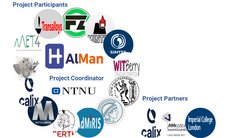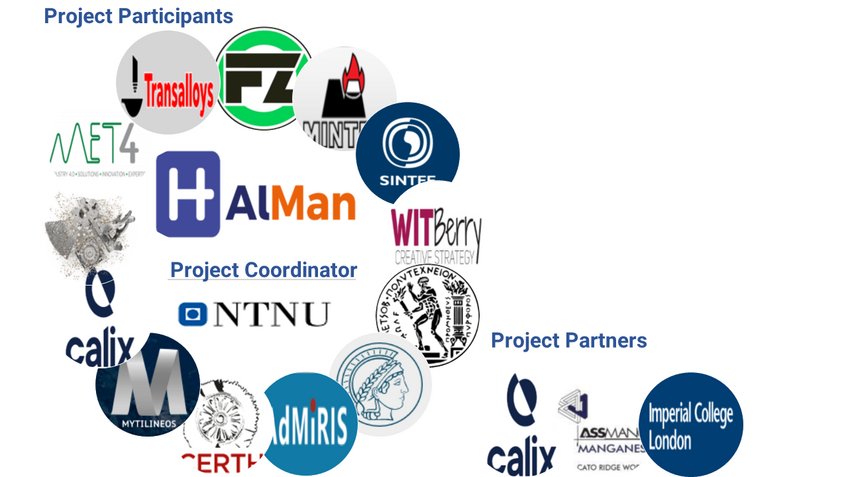
Sustainable hydrogen and aluminothermic reduction process for manganese, its alloys and critical raw materials production (HAlMan)
In this EU Horizon project, we at MPIE, will focus on the sustainable pre-reduction of manganese ores with hydrogen, especially the kinetic analysis of the reduction process using thermogravimetry analysis and an in-depth understand the role of microstructure and local chemistry in the reduction process.
Manganese is an important alloying element in steel, aluminum, and copper to enhance their mechanical performance; it is also a critical material in the battery industry. It is mainly produced in the form of ferromanganese and silicomanganese by a massive smelting metallurgical process using carbon as a reductant. Such a process is accompanied by significant CO2 emissions of ~1.4 t CO2/t metal. Thus, sustainable manganese production processes are highly needed to mitigate CO2 emissions in this sector and combat global warming. The newly started EU-wide project “Sustainable Hydrogen and Aluminothermic Reduction Process for Manganese, its alloys and Critical Raw Materials Production” (acronym: HAlMan) will contribute to decarbonization in manganese production by valorising existing industrial waste, reducing the carbon footprint of manganese production and maintaining Europe’s competitiveness in the metallurgical industry.
In this EU Horizon project, we at MPIE, will focus on the sustainable pre-reduction of manganese ores with hydrogen, especially the kinetic analysis of the reduction process using thermogravimetry analysis and an in-depth understand the role of microstructure and local chemistry in the reduction process. This study aims at disentangling the underlying fundamental mechanisms, which limit the efficiency of the reduction process. Besides, we also work on the design of two advanced high-manganese steels and medium-manganese steels using the manganese produced in the HAlMan and compare their mechanical properties with commercially available steels. Such advanced steel grades are especially interesting for low temperature applications, such as the storage and transport of natural gas and hydrogen, and lightweight automotive applications.
The HAlMan project is Co-funded by the European Union. The project’s consortium is composed of 14 partners and 3 associated partners (AP), representing 10 countries. The project coordinator is Norwegian University of Science and Technology (Norway). Consortium partners are OFZ AS (Slovakia), Mintek (South Africa), SINTEF AS (Norway), WIT Berry (Latvia), National Technical University of Athens (Greece), Max-Planck-Institut für Eisenforschung GmbH (Germany), Advanced Minerals and Recycling Industrial Solutions (Greece), Ethniko Kentro Erevnas Kai Technologikis Anaptyxis (Greece), Mytilineos Anonimi Etaireia (Greece), CALIX Europe (France), CALIX LTD (Australia, AP), Spolka Akcyjna Odlewnie Polskie (Poland), Imperial College of Science and Technology and Medicine (United Kingdom, AP), MET4 (Greece), Transalloy PTY LTD (South Africa), Assmang (South Africa, AP). Project has started in January 2023 and its duration is 4 years. Grant agreement ID: 101091936.













